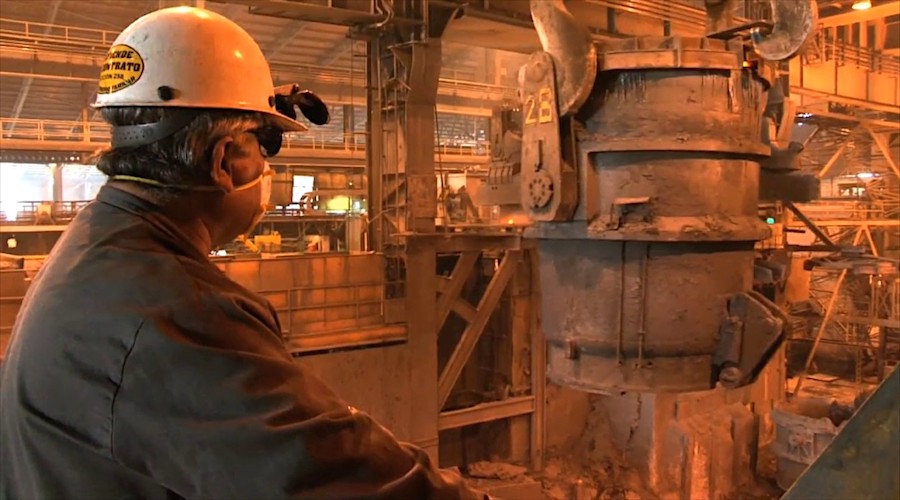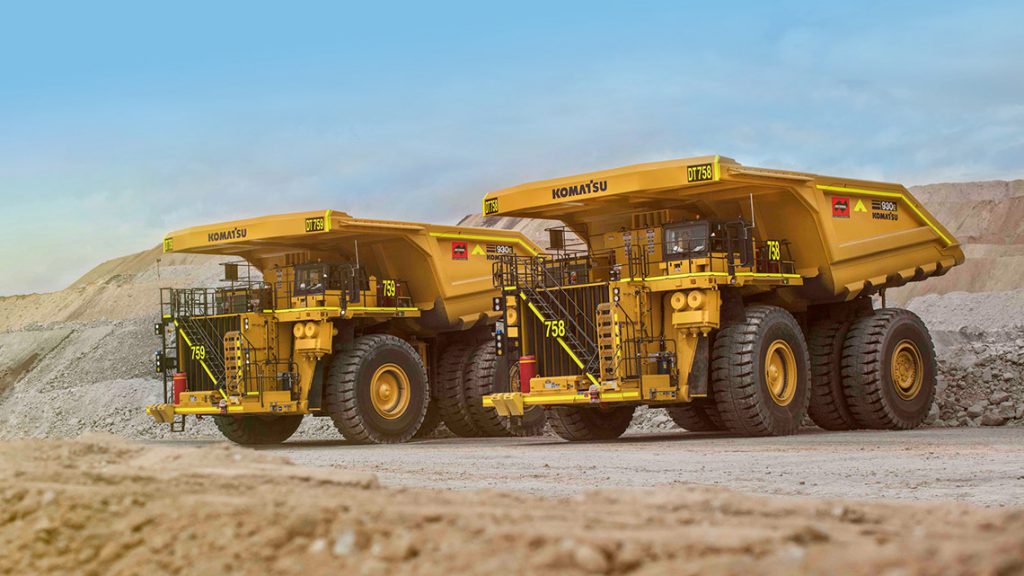MORE GREENWASHING WITH MYTHICAL TECHNOLOGY
Anglo American, Salzgitter to jointly advance green steel
Cecilia Jamasmie | August 4, 2021 |

The production of steel is one of the largest sources of carbon emissions, responsible for between 7% and 9% of the world’s total. (Image courtesy of Acero AHMSA | YouTube.)
Anglo American (LON: AAL) and German steel producer Salzgitter Flachstahl will work together on decarbonizing the steel sector by exploring ways to reduce carbon emissions.

The partners intend to conduct research into feed materials, including iron ore pellets and lump iron ores, suitable for use in direct reduction (DR) steelmaking based on natural gas and hydrogen.
“This is a significantly less carbon-intensive method than the conventionally used blast furnace (BF) process,” Anglo American said.
Anglo American, which produces iron ore concentrates and fines at its operations in Brazil and South Africa, has a target to achieve carbon neutrality across its operations by 2040.
THE PROCESS OF PRODUCING STEEL INVOLVES ADDING COKING COAL TO IRON ORE TO MAKE THE ALLOY, WHICH MAKES THE STEELMAKING SECTOR A HEAVY POLLUTER, RESPONSIBLE FOR UP TO 9% OF GLOBAL GREENHOUSE EMISSIONS
Iron ore is vital in the production of steel. The process involves adding coking coal to iron ore to make the alloy, which makes the steelmaking sector one of the world’s heaviest polluters, responsible for up to 9% of global greenhouse emissions.
“While steel is a critical building block of our modern lives, and itself a critically needed material for the energy transition, the steel industry is a significant producer of carbon dioxide,” chief executive of Anglo American’s marketing business Peter Whitcutt said in the statement.
The European steel industry has been developing new steelmaking technologies to reduce its carbon footprint, with Salzgitter working to produce steel as resource-efficiently as possible under its SALCOS (Salzgitter Low CO2 Steelmaking) project. The initiative is targeting a switch from the use of BF based on coal to wholly DR steelmaking.
Technology over targets
Rather than set hard targets to reduce so-called Scope 3 emissions, the ones generated by customers, major iron ore producers including Rio Tinto (ASX, LON, NYSE: RIO) and BHP (ASX, LON, NYSE: BHP) have committed to working with the steel sector to help develop new technologies instead.
Rio is already working with and POSCO (NYSE: PKX), South Korea’s largest steel producer to explore a range of technologies for decarbonization across the value chain from iron ore mining to steelmaking.
The company has also teamed up in February with two European companies to explore production of low-emissions hot briquetted iron (HBI) in Canada.
The two initiatives build on Rio’s decision, unveiled in December, to invest $10 million in low-carbon steelmaking projects over the next two years, as part of its partnership with China Baowu Steel Group, the nation’s largest steel producer.
Vale (NYSE: VALE) and BHP, the no. 1 and no. 3 iron ore producers respectively, have both invested in Boston Metal, a startup seeking to develop less-polluting ways of making steel.
Anglo American produced 15.7 million tonnes of iron ore in the April-June quarter, up 6% compared to the same period last year. The company expects to produce between 64.5 million tonnes and 66.5 million tonnes this year.
BHP joins Komatsu’s GHG Alliance
MINING.com Editor | August 4, 2021 |

Image from Komatsu.
To accelerate its push to become a net-zero operator by 2050, BHP announced it will become a founding member of Komatsu’s GHG Alliance, which aims to develop commercially viable zero-greenhouse gas emissions haul trucks.

As a founding partner of the Alliance, the world’s no.1 miner plans to operate one of the first batches of zero-emission trucks upon commercial release.
BHP will provide engineering and technical resources to Komatsu to support the development phase as required, which in turn will provide BHP with real-time access to technology in development.
In the media statement, BHP said it will collaborate with Komatsu through the BHP FutureFit Academy to develop the future-facing skills within its teams to operate and maintain the pioneering equipment.
“Tackling climate change requires strong collaboration and collective effort across the supply chain,” BHP’s Chief Commercial Officer, Vandita Pant, said in the statement.
“Reducing vehicle emissions is key to our climate strategy, and we are thrilled to join with Komatsu and our peers in the global mining sector on real, tangible action to help accelerate our transition to a low carbon future,” Pant said.
No comments:
Post a Comment